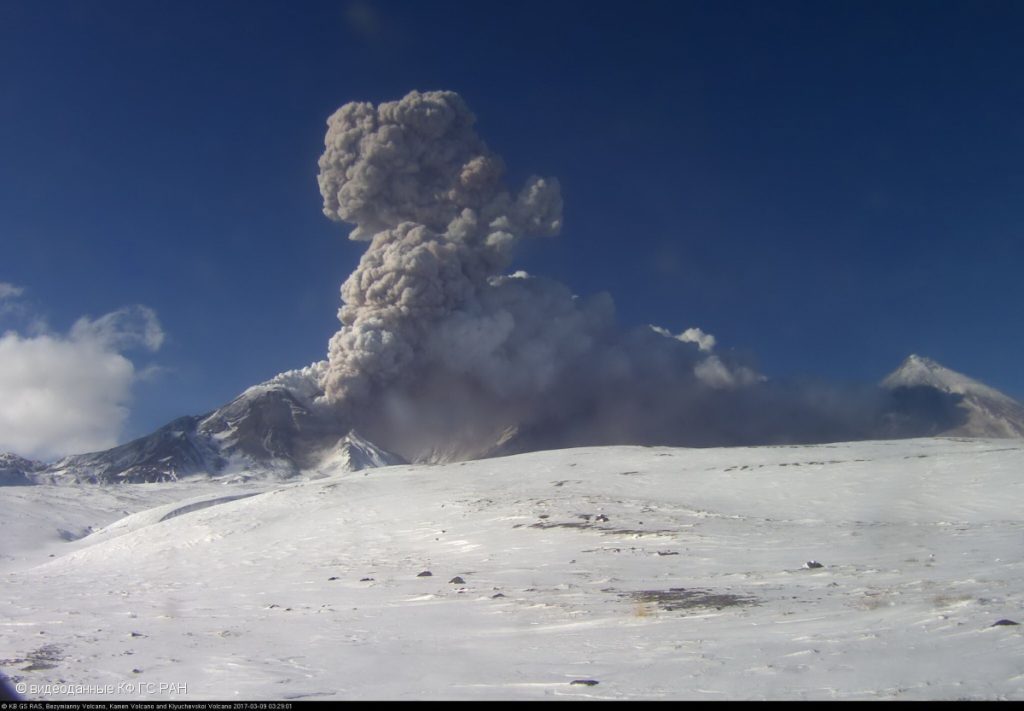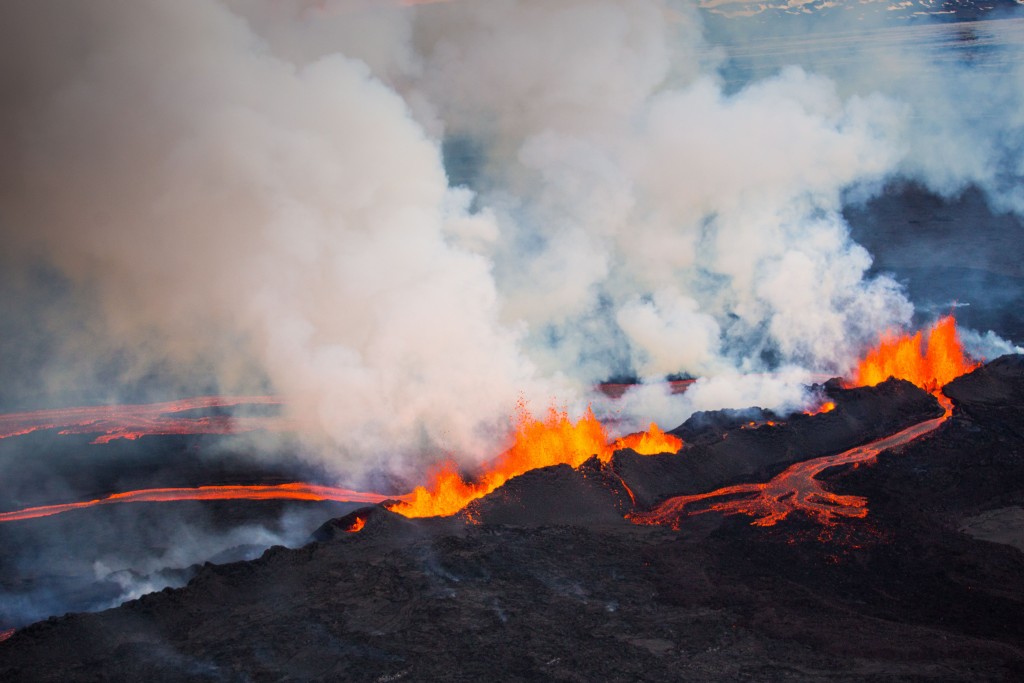Elevated volcanic activity is reported around the world…
With frequent strombolian explosions at Nishinoshima in Japan, strong degassing at Poas and Turrialba in Costa Rica and Bezymianny in Russia as well as a M3.9 earthquake that hit near Bardarbunga in Iceland.
The Japan Coast Guard reports frequent (every 40-60 seconds) strombolian explosions at a new pyroclastic cone in the crater of Nishinoshima. Ash plumes are rising 500 meters above the surface and two lava flows originating from the northern part of the cone have already traveled 180 m SW and 170 m W, and entered the ocean. The island continues to grow.
Another hotspot is Costa Rica with the Poas, Turrialba and Rincon de la Vieja volcanoes.
Seismic activity has almost douled in the last 17 hours at Poas volcano, which is most probably related to a strong degassing and that generated a vigorous plume of vapor rich in magmatic gases and aerosols. Residents of Tambor, Sabanilla, Grecia and Naranjo de Alajuela have reported a strong odor of sulfur but no ahsfalls until now.
The Turrialba volcano presents a sustained volcanic activity with frequent (4-5/hour) small explosions ejecting plumes of ash, gas and aerosols to heights more than 500 meters and rocks more than 200 meters high.
After the phreatic eruption on May 23, 2017 the volcanic activity of Rincon de la Vieja has decreased considerably.
In Kamchatka, the Bezymianny volcano is also showing strong gas-steam activity, which could affect low-flying aircraft. A thermal anomaly over the volcano on 22 and 25 May on satellite images.

Meanwhile another M3.9 earthquake hit the Bardarbunga caldera on May 27, 2017. This relatively strong earthquake for the region followed a swarm of more than 100 earthquakes in the lat 2 weeks, according to the Icelandic Met Office. Three of those earthquakes were above M3.0.

A large earthquake also rocked south Iceland in early May 17 with reports of Hekla Volcano being ready to erupt. Are you ready for the next big eruption?











